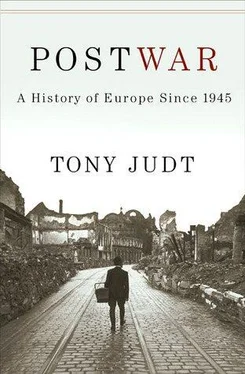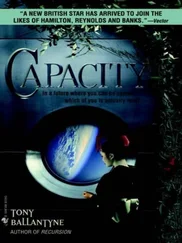There was occasional substance to the French claim: Félix Eboué, the governor-general of French Equatorial Africa in 1945, was a high French colonial functionary—and he was black.
According to some sources, De Gaulle discouraged open talk of colonial self-government lest European settlers, notably in Algeria, seize the occasion to secede from France and establish a segregationist state, on the South African model. This was not an unreasonable anxiety, as subsequent events would show.
For friend and foe alike, Ho Chi Minh’s incarnation as an international Communist icon was confirmed on January 14th 1950, when Mao and Stalin were the first to recognize his newly declared Democratic Republic of Vietnam.
These events are memorably depicted in Gilles Pontecorvo’s 1965 film La Battaglia di Algeri ( The Battle of Algiers ).
The referendum established a new, Fifth Republic. De Gaulle was elected its first President three months later.
When the Belgians abandoned the Congo in 1960 they left behind just thirty Congolese university graduates to fill four thousand senior administrative positions.
Between 1954 and 1962, 2 million French soldiers served in Algeria; 1.2 million of them were conscripts.
Quoted in Fernand L’Huillier, Dialogues Franco-Allemandes 1925-1933 (Strasbourg, 1971), pp. 35-36.
The Canal itself had always been within Egyptian territory and indisputably a part of Egypt. But most of its revenues went to the foreign-owned company.
Quoted in Alan Milward, The European Rescue of the Nation-State (Berkeley and Los Angeles, U of California Press, 1992), page 429.
Andrew Moravscik, The Choice for Europe. Social Purpose and State Power from Messina to Maastricht (Ithaca, Cornell University Press, 1998), page 137.
The Stalinist leadership remained firmly in place, trials continued in camera for two more years and on May 1st 1955 a grotesque, over-sized statue of Stalin was erected on a hill overlooking Prague. De-Stalinization would not reach Czechoslovakia until a decade later, with dramatic consequences.
Kádár, whom Nagy had released from prison three years before, was appointed First Secretary of the Hungarian Party on October 25th. He replaced Gerö, whose security forces had fired on unarmed demonstrators in Parliament Square that same morning.
That the Soviet leader could know this as early as October 28th, three days before the Anglo-French invasion began, suggests that Soviet intelligence was even better than the Western Allies feared at the time.
Even Gomułka, in Poland, acceded readily enough to Soviet arguments. In Poland, Nagy’s departure from the Warsaw Pact was a source of anxiety—the Poles’ fear of German territorial revisionism gave them a special interest in the security arrangements guaranteed by Soviet arms. It should be noted, though, that in a meeting with Khrushchev in May 1957 Gomułka tried hard, albeit without success, to dissuade the Soviet leader from putting Nagy on trial.
In particularly backward organizations, like the French Communist Party (which for a long time denied all knowledge of Khrushchev’s denunciations of Stalin), many members abandoned the Party not so much because of what was happening in the Soviet bloc, but because the local leadership forbade any discussion of it.
One should not, however, overstate the speed with which old regulations were swept aside. Well into the 1960s the Italian government, for example, found it politically prudent to maintain Fascist-era tariffs and quotas on foreign cars, the better to protect domestic producers (essentially FIAT). British governments pursued similar strategies.
Much of which would be recycled as loans to that same Third World, now saddled with crippling debts.
Great Britain, as so often, was different. In 1956, 74 percent of the UK’s exports went outside of Europe, mostly to its colonies and to the Commonwealth. Even in 1973, when the UK finally entered the EEC, only one-third of its export trade was directed at the twelve countries that would form the European Union in 1992.
By way of comparison it might be noted that the figure for the USA in 1950 was 12 percent employed in agriculture.
Sweden constitutes a partial exception—the key to Swedish post-war prosperity was the creation of a manufacturing specialty in high-value products. But the Swedes had access to a pool of cheap and readily available (Finnish) immigrant workers, as well as a hydroelectric power industry that cushioned the country from oil-price shocks. Like Switzerland, and for similar reasons, they constitute a special case.
The contrast with past practice is revealing. In earlier stages of French industrialization even the great Parisian investment banks had lacked the resources to support the modernization of the country’s industrial infrastructure, and had received no help or encouragement from the government. The dilapidated condition of French factories, roads, rail networks and utilities in 1945 bore eloquent testament to these shortcomings.
By 1950, Yugoslavia, Poland, Romania and Albania were the only European countries where more than one child in ten died before the age of one. In west Europe the last-placed country was Portugal, where the infant mortality rate in 1950 was 94.1 per thousand.
The following year, in March 1956, this right was extended to all French workers. Renault workers obtained a fourth week of paid vacation in 1962, but on this occasion it took seven years before the rest of the country followed suit.
With the result that as tourism began to develop towards the end of the Sixties there was actually a shortage of workers in Greece itself, for the most menial jobs.
Just fifteen years earlier, in 1958, there had been 25,000 Italians, 4,000 Yugoslavs and not enough Turks to be recorded in official censuses.
These draconian restrictions on colonial immigration reflected mainstream opinion in both major parties. However, less than a generation before and in rather different circumstances, the Labour Prime Minister Clement Attlee had written thus, in July 1948: ‘It is traditional that British subjects, whether of Dominion or Colonial origin (and of whatever race or colour), should be freely admissible to the United Kingdom. That tradition is not, in my view, to be lightly discarded, particularly at a time when we are importing foreign labour in large numbers.’
The exception was Italy, where in 1971 less than 5 percent of all purchases were made in the country’s 538 supermarkets and almost everyone continued to use local, specialized shops. This was still true twenty years later: in 1991, by which time the number of food outlets in West Germany had fallen to 37,000 and in France to a mere 21,500, there were fully 182,432 food stores in Italy. Per head of the population, only Poland had more.
Читать дальше












